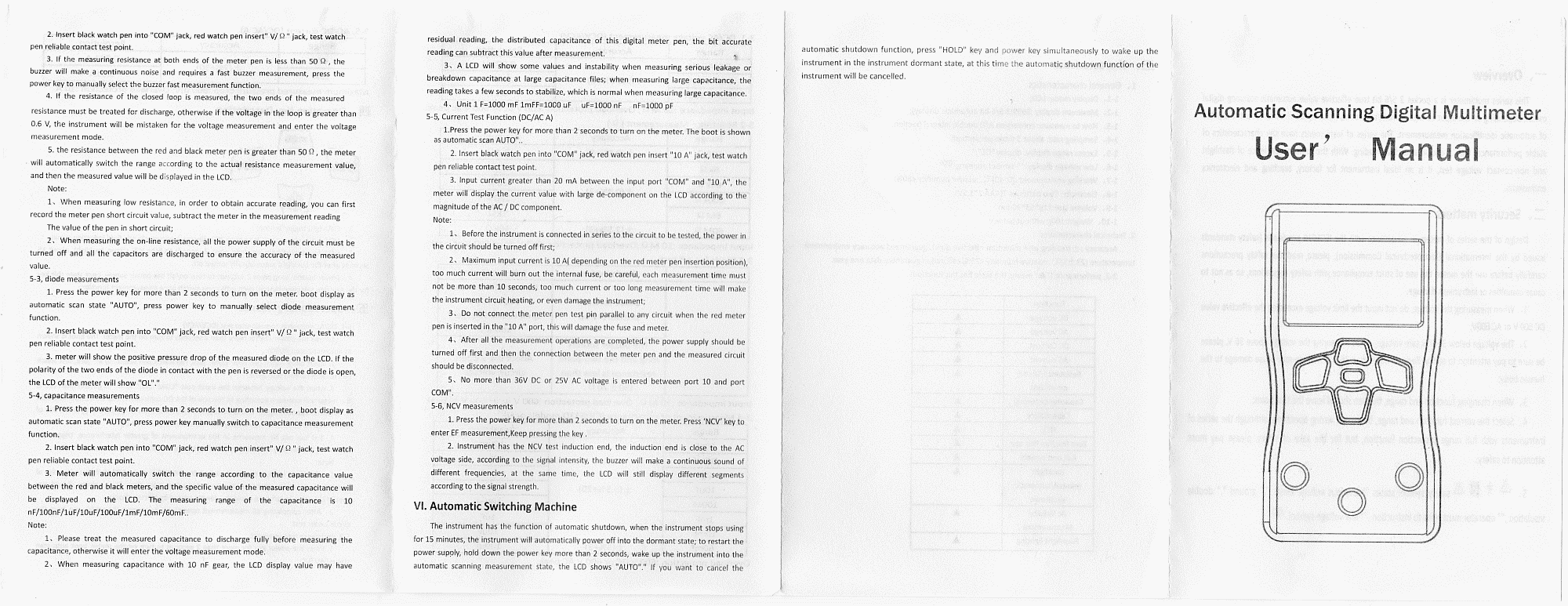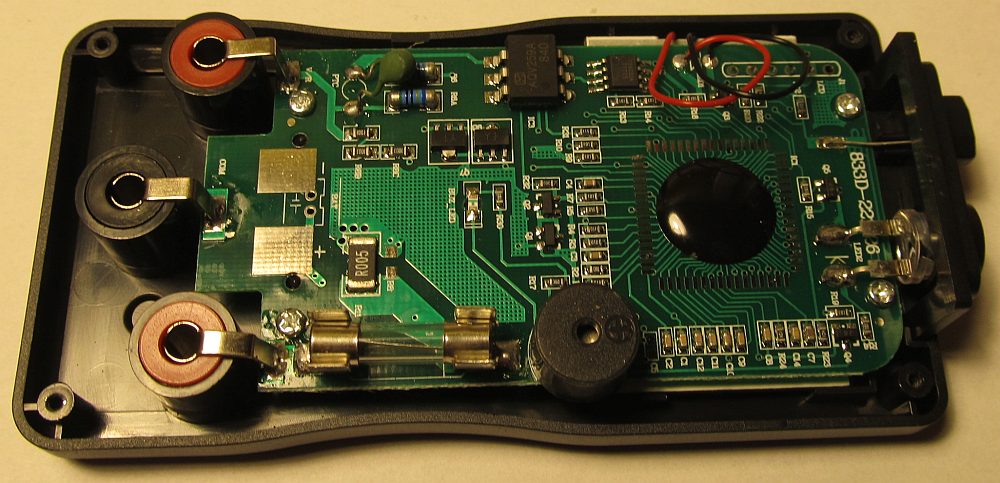Aneng M118A multimeter
I've bought this multimeter in November 2024 to leave it as "extra" at family house. It seems to be more than enough for occasional debugging and odd jobs, the price is great ($5), it has some positive reviews and it might be easier to use than typical multimeter thanks to "Auto" (I thought that it could be safer to use for family members than multimeter with rotary switch - in theory it should be unbreakable).
It looks like there are two hardware variants though and the one I've got had some unusual flaw. I've read about it first in this thread, I probably would miss it otherwise like some other reviewers.

It is small, but AN8008/AN8009 is only slightly larger (~15 mm more height). One detail:
AN8008 is "rated" as 600 V CAT III / 1000 V CAT II while M118A: CAT IV 600 V.
Build quality is not the greatest. LCD is not protected in any way, it is also ghosting a little bit if front case (or even buttons) are pressed.

Scan of user manual leaflet:



This PCB is marked as 833D-221026.
The problem is caused by Q6 + Q7 transistor pair (working as voltage limiter), placed after PTC resistor
but before AQV259A solid state relay. There is a second, similar voltage limiter after SSR - Q1 + Q2 and this should
be enough.
Since Q6 + Q7 are always connected just with thermistor in series, this multimeter would have very low input resistance when
measuring voltager from 12 V up. It is crazy, it is really taking 15 mA at 30 V input voltage.
PTC thermistor is really heating up and current drops by 2 mA after time. I don't know how this would behave when connected to 230 V AC.
Maybe this won't be catastrophical, but I'm not brave enough to try - while thermistor could limit current to reasonable value, it might also reach
temperature as high as 200 C. I also have no idea what voltage it is rated for.
There is also another (earlier?) PCB version used in this multimeter, marked as 833D-200520 that does not seem to have this issue - Q6 and Q7 are not present on it.
Note: only current input has a fuse.



I've desoldered/removed completely Q6 + Q7 (Y1) transistors - just a few seconds with hot air, with soldering iron it might be harder.
Cutting PCB trace with a sharp knife (creating at least 1 mm gap!) might be another way.
After that I've measured 230 V AC without issues and re-tested current voltage meter current consumption at 30 V.



I've added metal strip to electric field detector "antenna". This noticeably improved sensitivity - from very poor (needing to touch cable to detect it)
to somehow useful (detecting cable from 4 centimeters). It is still not able to detect cables in plastered walls and is not always reliable near the electrical
switches and sockets in the walls. I also don't like that this functions needs the NCV button being pressed down continuously.

For a built-in flashlight I've changed R16 (resistor for LED) from 100 Ohm to 47 Ohm. I cannot tell if it made noticeable difference, flashlight is still not too bright,
but I guess it is usable.
As flashlight LED was slightly recessed, I've resoldered it, moving closer to the front.
Measuing multimeter input resistance with another multimeter - on "DC" range I'm getting 835 kOhm, but on auto it goes back and forth periodically. I do not have fast enough multimeter to measure it precisely, but I suppose it might create lot of confusion when working with some high impadance circuits.
Current consumption from 2 AAA cells: 2 mA in "AUTO" mode, 0.5 uA when powered off. There is automatic power off function after 15 minutes.
Back to reviews / teardowns / repairs list.